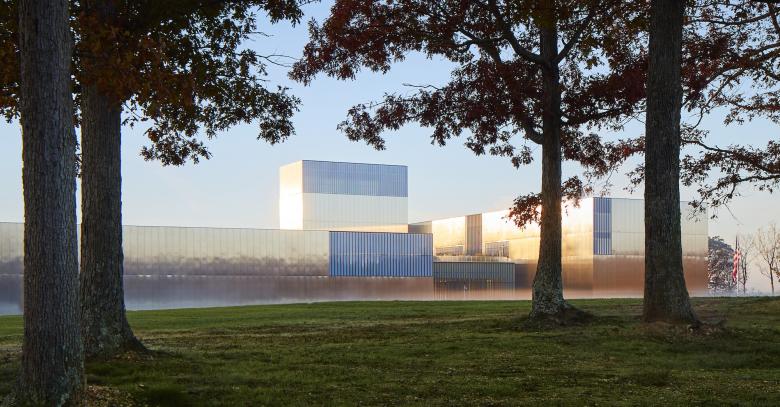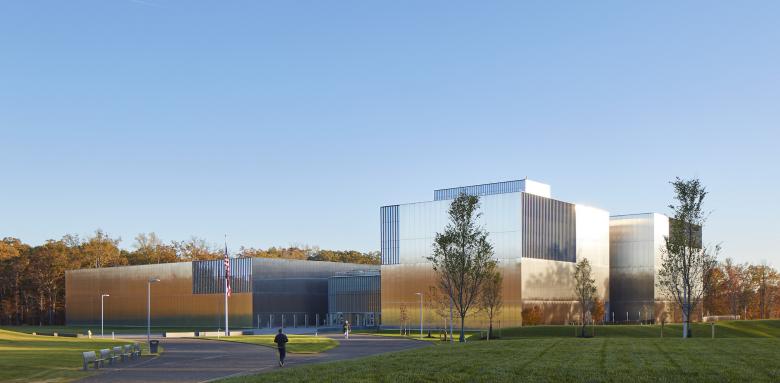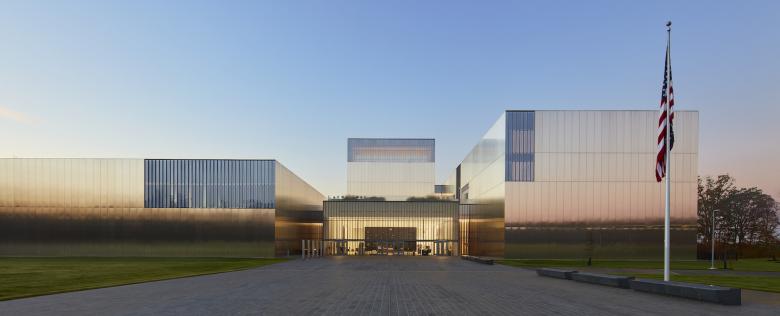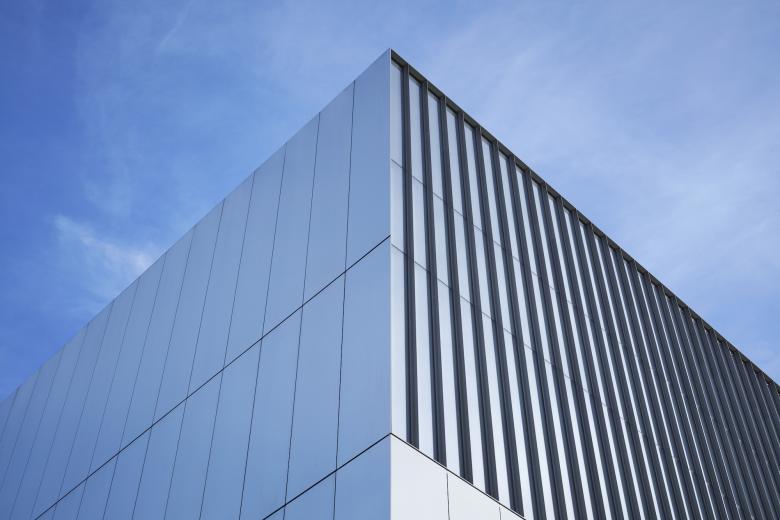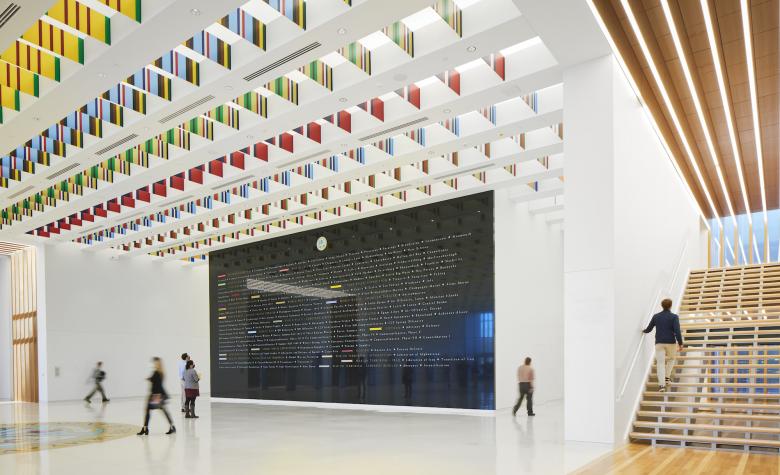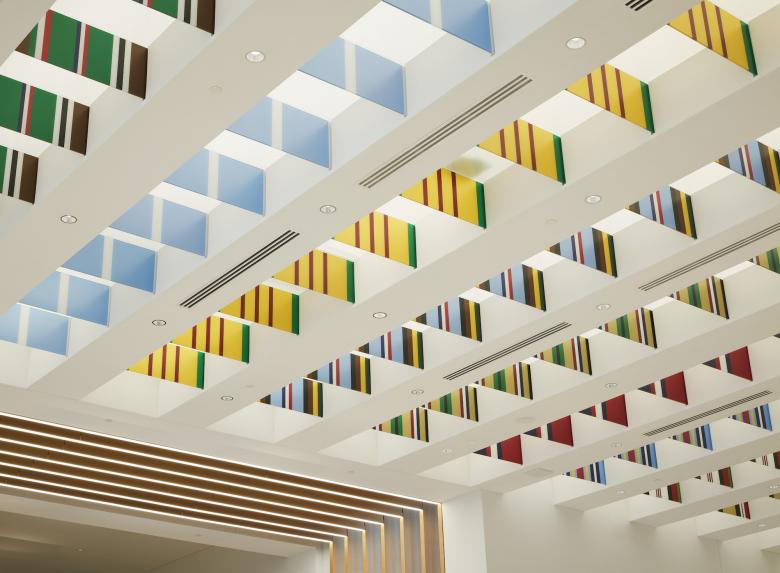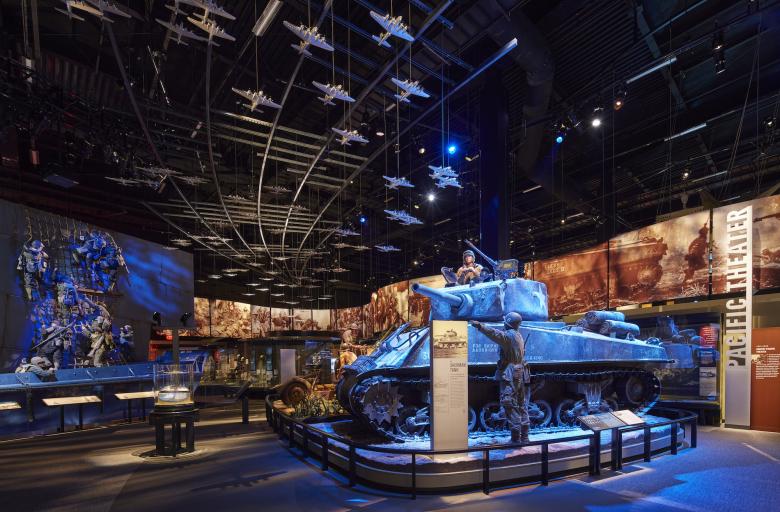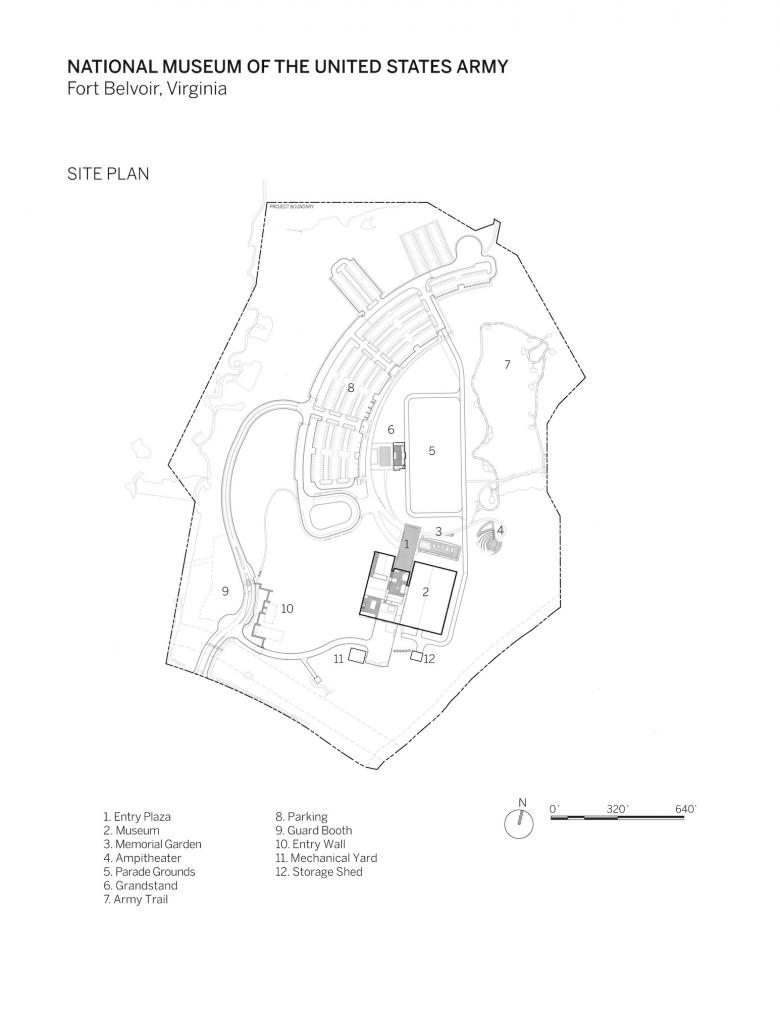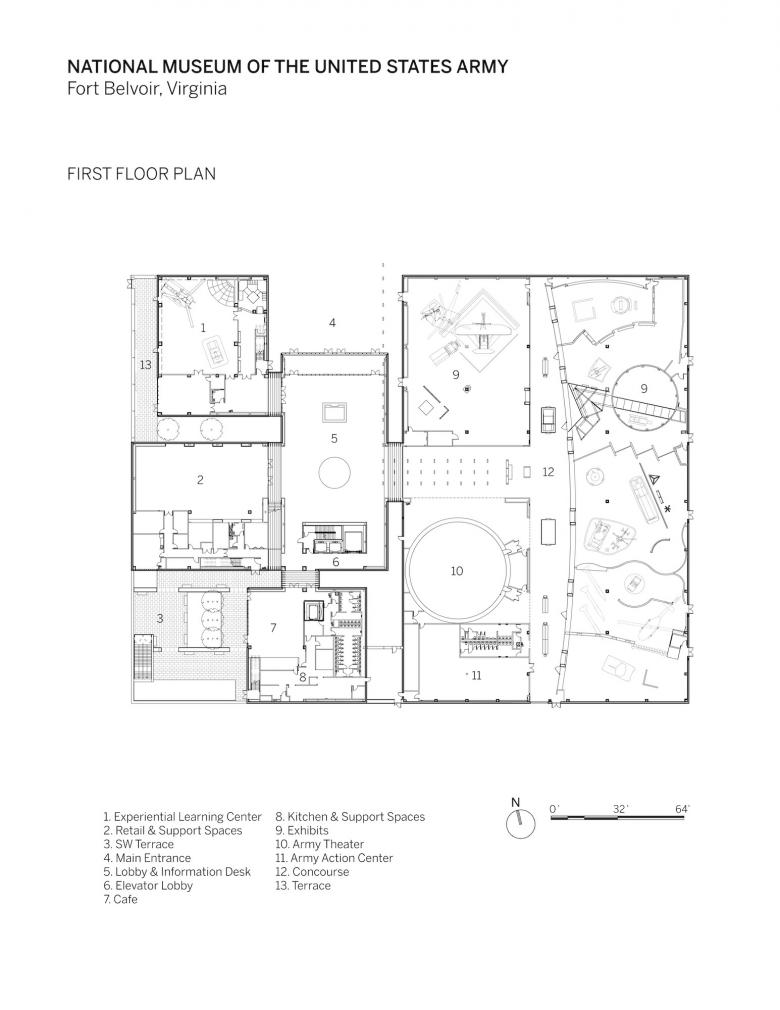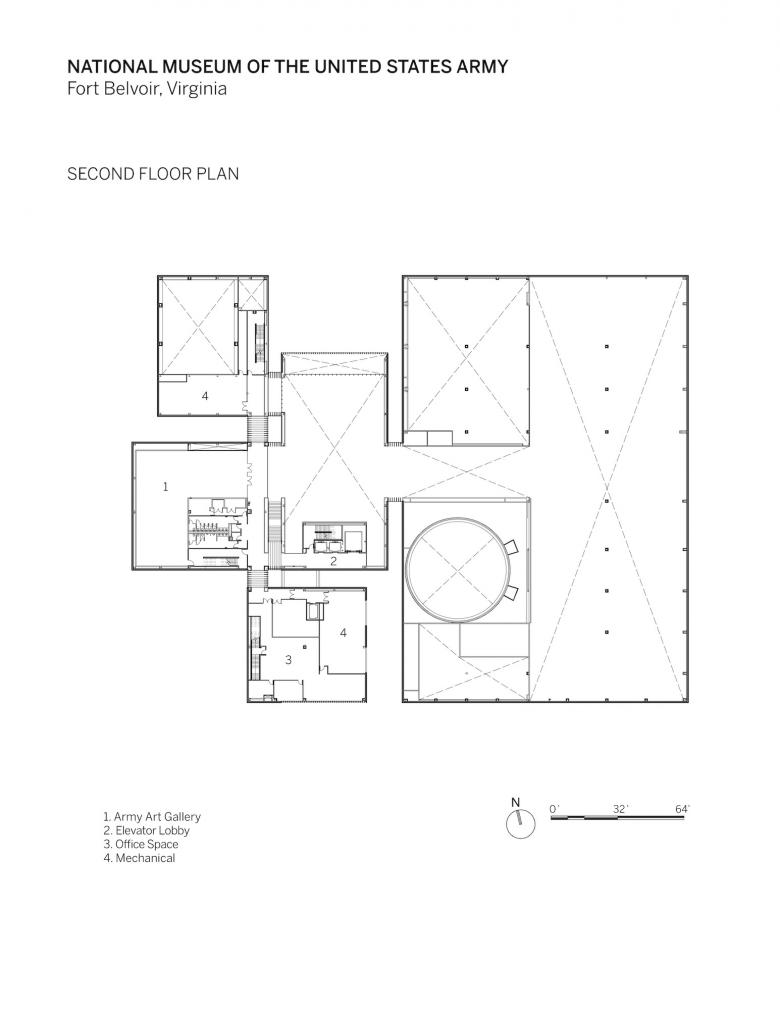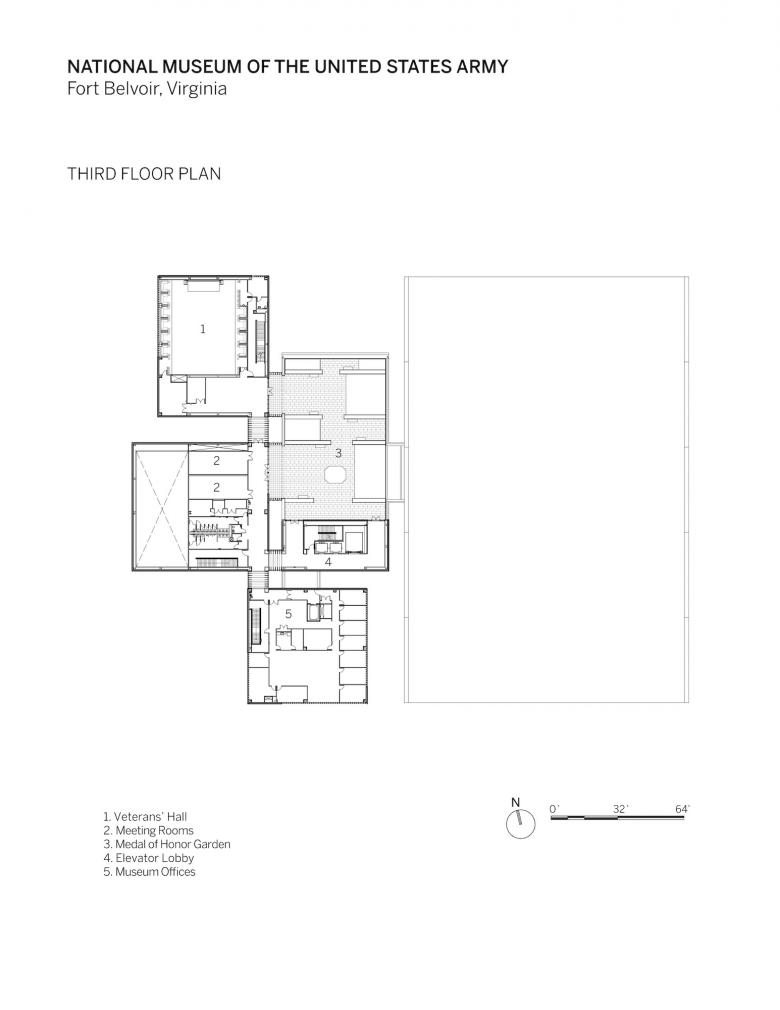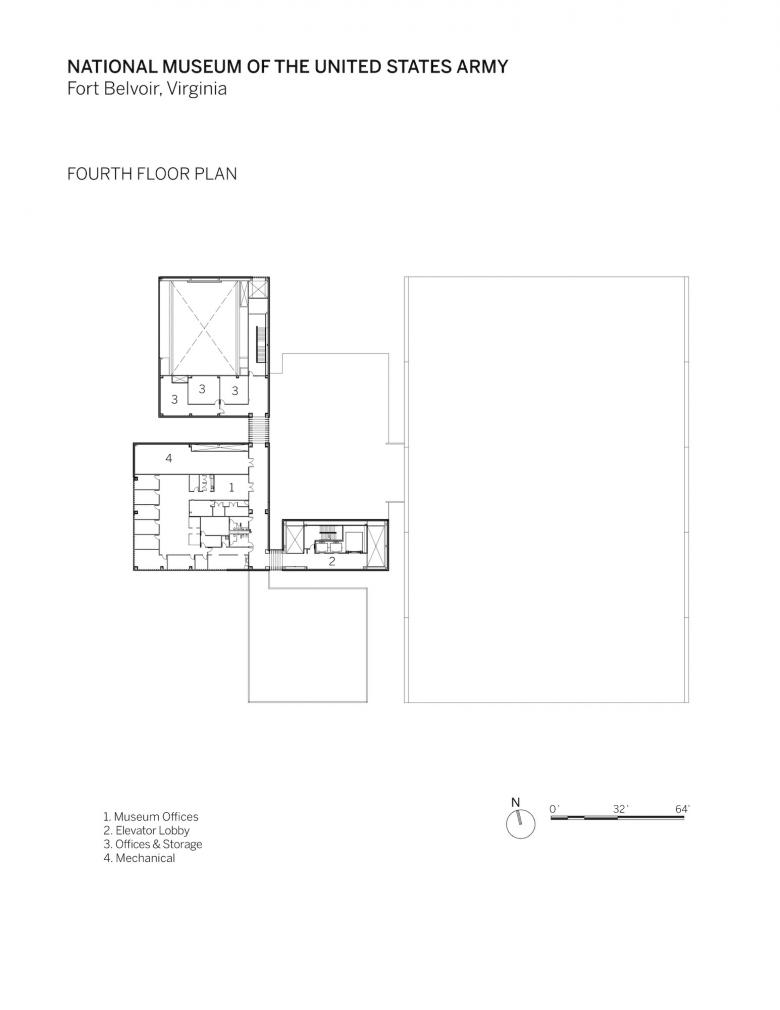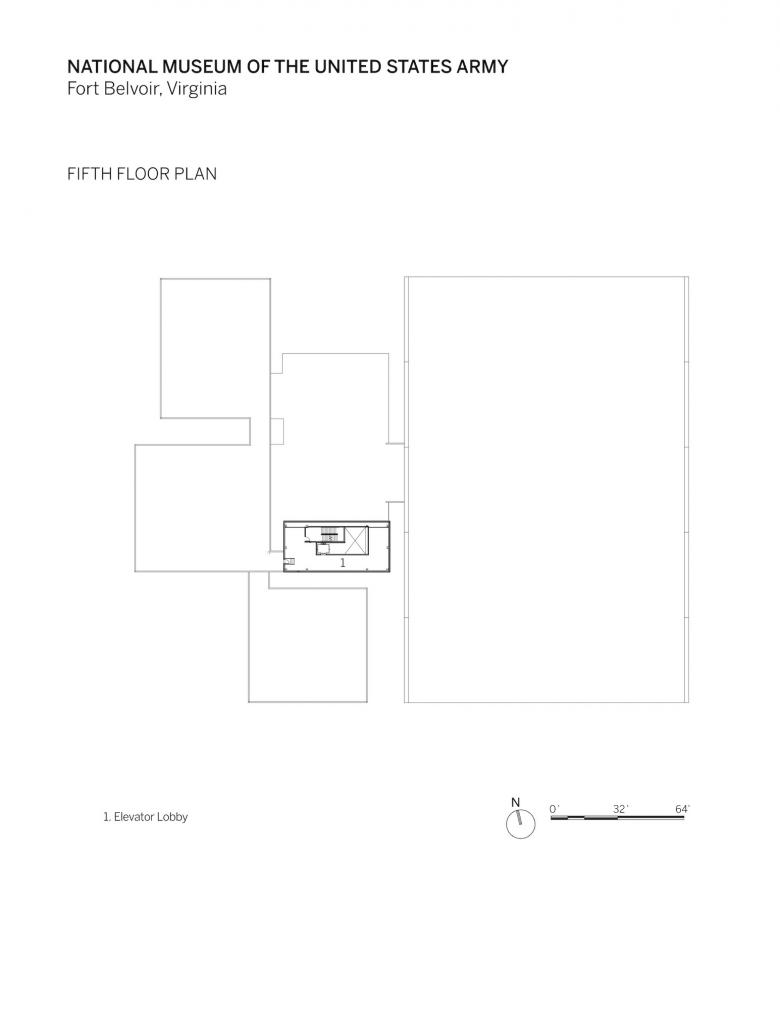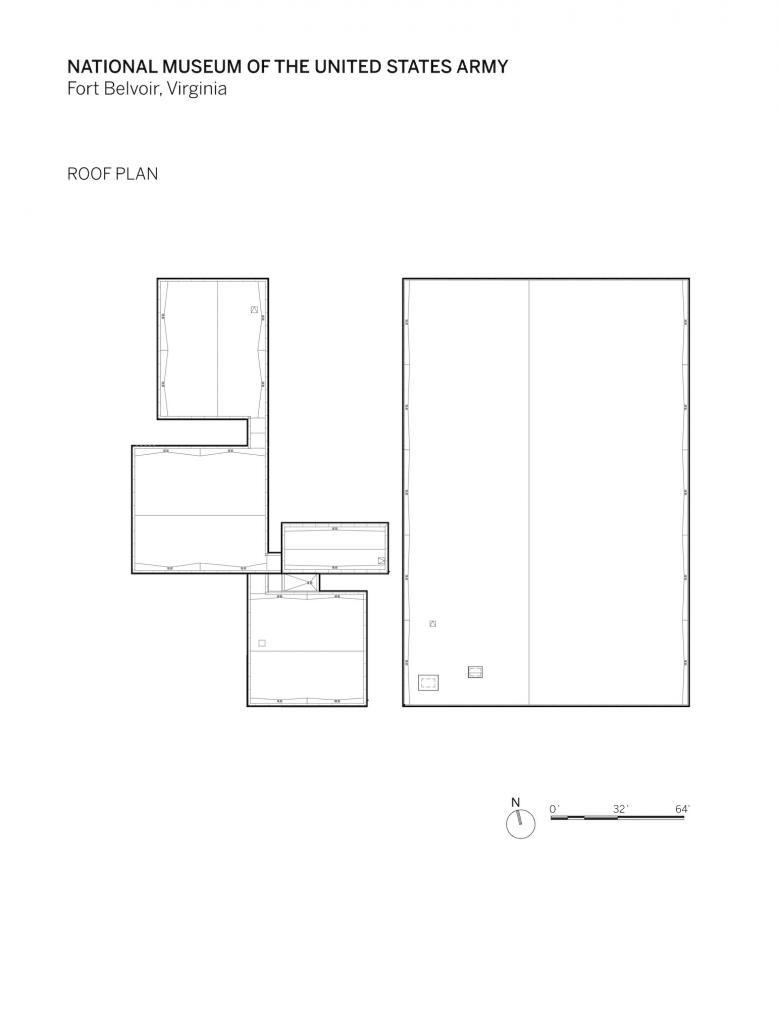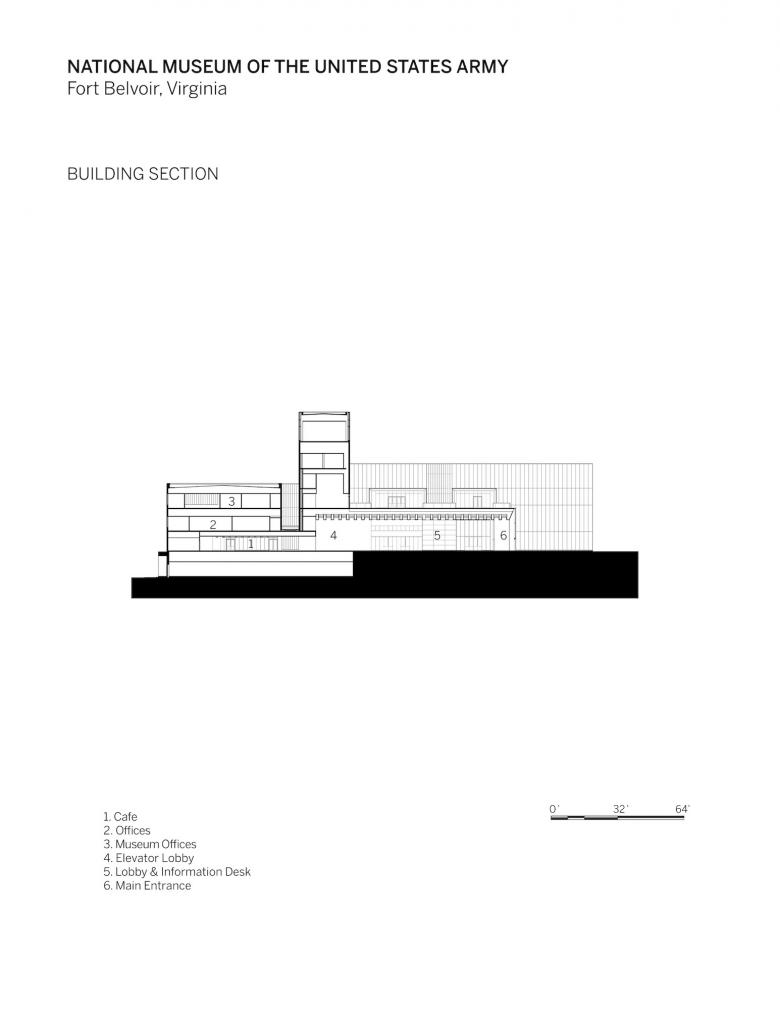US Building of the Week
National Museum of the United States Army
Skidmore, Owings & Merrill
7. December 2020
Photo © Dave Burk | SOM
The National Museum of the United States Army opened last month, on November 11, better known as Veterans Day. Designed by Skidmore, Owings & Merrill, the building is wrapped in a taut stainless steel and glass skin that is aligned with the ideals of the oldest branch of the U.S. military. The architects at SOM answered a few questions about the project.
Location: Fort Belvoir, Virginia, USA
Client: Army Historical Foundation (for the museum); United States Army Corps of Engineers (for the roads and infrastructure improvements)
Architect: Skidmore, Owings & Merrill
- Design Principals: Roger Duffy, Colin Koop
- Project Architects: Frank Mahan, Thierry Landis
- Project Managers: Kristopher Takacs, Bill Powers
- Project Team: Architecture: Nick Holt, Mark Regulinski, Brad Cary, Eliezer Lee, Peter Glasson, Silvi Stefi, Michi Ushio, John Sunwoo, Christian Kotzamanis, Andrea Wong, Jing Hao, Megan Shelby; Structural Engineers: Charles Besjak, Bonghwan Kim, Yunlu Shen, Selam Gebru, Georgi Petrov, Raymond Sweeney; MEP: Teresa Rainey, Joseph Dienno, Jean-Jacques Ahounou
MEP/FP Engineer: Skidmore, Owings & Merrill, Southland Industries, M.C. Dean
Landscape Architect: AECOM
Lighting Designer: Brandston Partnership Inc.
Contractor: Clark Construction Group LLC
Additional Collaborators: Draper Aden Associates (Civil Engineering); Thornton Tomasetti (Protective Design and Security); Shen Milsom & Wilke (Telecom, Security, and A/V), Van Deusen & Associates (Vertical Transportation); Crystal McKenzie, Inc. (Signage); Hopkins Foodservice (Food Service); Christopher Chadbourne & Associates and Eisterhold Associates Inc. (Exhibit Design); Design and Production Incorporated (Exhibit Installation); The Scenic Route, Inc. (Design and Installation of the Experiential Learning Center, the Army Theater, and the Medal of Honor Experience Exhibit); Shirley Contracting Company, LLC (Roads and Infrastructure Improvements); Tecta America Architectural Metals (Metal Installer); Tidewater Glazing (Glass Installer)
Site Area: 84 acres
Building Area: 185,000 square feet
Photo © Dave Burk | SOM
What were the circumstances of receiving the commission for this project?This project has been in SOM’s office for many years. We won the design competition nearly two decades ago, but we were not officially awarded the project until 2008 and ground was not broken until 2016. Like many projects of this nature, the Army Historical Foundation had to raise much of the money from private donors. The result of that fundraising is the museum that you see today. And through it all, with the thousands of donors, the foundation, and various government constituencies, our job as architects was to build consensus through the entire process, and make sure we maintained a sense of excitement and aspiration for the museum. That vision was to create an institution of national significance — a place that would tell the story of the individual soldier.
Photo © Dave Burk | SOM
Please provide an overview of the project.The National Museum of the United States Army is the first museum to tell the story of the oldest branch of the US military. It walks visitors through every generation of the Army, focusing not on battles or wars, but on the individual soldier — a centuries-long narrative of honor, sacrifice, and valor. It is a center of education, and is designed to serve as the Army’s symbolic front door.
The main building is designed in a series of five pavilions for exhibits and special events, and for the future of the site, SOM’s design and plan also includes a quiet memorial garden, a parade field and grandstand, and an Army trail with interpretive stations.
Photo © Dave Burk | SOM
What are the main ideas and inspirations influencing the design of the building?The museum is a place of national significance, and it is designed to express that. The architecture draws inspiration from three core ideals — discipline, modesty, and rigor — that come together to create an inviting center of education. These ideals are expressed particularly in the facade, which is designed in a regular grid of laser-cut, stainless steel panels. At the corner of each of the building’s five pavilions, recessed glass panels alternate with painted aluminum fins to create a sense of dynamism within the building’s sculpted form.
Photo © Dave Burk | SOM
How does the design respond to the unique qualities of the site?The museum is located on a bucolic, 84-acre site in the Fort Belvoir Military Installation in Virginia, and its placement within this site is inspired by the planning for the historic United States Military Academy at West Point. Like the academy, the building rests atop a plateau to evoke a sense of monumentality. This creates a symbolic experience that begins with the access road, which offers a glimpse of the stainless steel-clad museum through the trees and across a long meadow.
During the day and into the evening, the stainless steel responds directly to its setting. It reflects the surroundings and the light from the sun. This creates another level of dynamism within the facade — it transforms the character of the building through every season and time of day.
Photo © Dave Burk | SOM
Was the project influenced by any trends in energy-conservation, construction, or design?Sustainability is essential to all of our work, and critical to the Army’s construction projects. Structures should be designed with an eye toward the environment, and they must be built to last. The museum is no exception — it was certified LEED Silver in 2019 through a variety of measures, including the facade design, which was conceived to protect the building in addition to serving as one of the signature architectural features. The stainless steel panels on the facade, which beautifully reflects its surroundings, also acts as a rainscreen system, and provides the building with insulation. This helps reduce energy use, and helps maintain an essential balance between temperature and humidity regulation — an essential component for a museum that displays many old items and artifacts in its collection.
Photo © Dave Burk | SOM
What products or materials have contributed to the success of the completed building?The stainless steel was chosen as the cladding material to make a powerful architectural expression. The way it changes the character of the building throughout every day and every season establishes a sense of humility. There is also a simplicity and a sharpness to the paneling, and that is meant to evoke the discipline, modesty, and rigor that is central to the design.
The steel also works well with the composition of the museum. Because the building is designed in a series of pavilions — including several that, like in most museums, were required to have no natural light — we wanted to create a dynamic interplay between the steel and, where we could, with glass. To establish this interplay, we designed glass thresholds between each pavilion. From the outside, these thresholds bring a permeability to the facade — providing a contrast to the reflections in the steel. From the inside, the thresholds signify transitions between spaces, and offer views out to the landscape. These views complement the natural materials of the interior, which is characterized by terrazzo floors and American white oak and ash finishes, to create a warm and relaxing environment.
Email interview conducted by John Hill.
